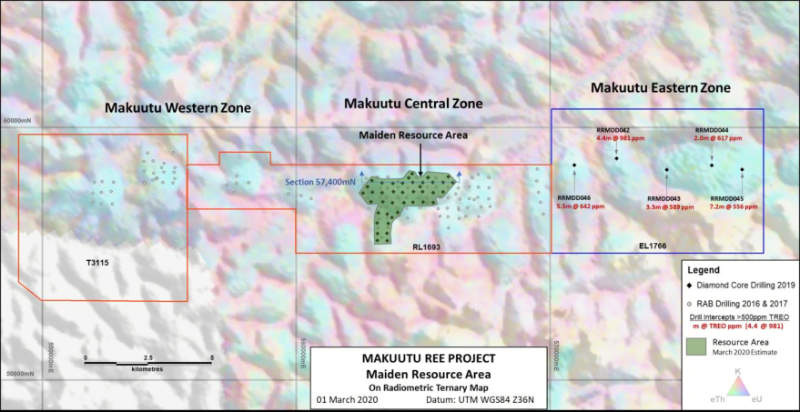Oro Verde is off the blocks with maiden rare earths resource in Uganda

Off to a running start Pic:Getty Images
Special Report: Oro Verde’s maiden resource estimate for its unique Makuutu rare earths project has a promising grade at the upper end of expectations.
The maiden resource of 47.3 million tonnes grading 910 parts per million, or about 0.09 per cent, total rare earth oxides (TREO) is based on just 681.5m of core drilling that was carried out in late 2019 within the Makuutu Central Zone.
Oro Verde (ASX:OVL) said this covers just a small portion of the larger Makuutu prospective area, which extends along a mineralisation corridor of 26 km.
Listen: Explorers Podcast: Coronavirus is doing wonders for non-Chinese rare earths projects
The company previously estimated an exploration target of 270 million to 530 million tonnes grading 0.04 per cent to 0.1 per cent TREO (400 parts per million to 1,000 parts per million). The maiden mineral resource estimate represents the first stage of a step-wise approach to convert exploration target to mineral resource.
While the resource grade is modest compared to those found in hard rock rare earth projects, Makuutu’s nature as one of the very few ionic adsorption clay-hosted projects outside of China means that extracting the rare earths could be achieved cheaply and simply.
Initial metallurgical test work has already indicated that up to 75 per cent of the rare earths at Makuutu can be extracted through the simple, low-cost method of salt desorption – literally washing the rare earths from the clay using a salt solution.
Clay-hosted deposits like Makuutu are generally considered to be the lowest-cost sources of rare earths globally.

Oro Verde is currently preparing to commence a drilling program where it continues to test its exploration target and thereby working to extend the resource to the east and west. Additionally, the drill program has been designed to better enhance understanding of the geology, to work towards upgrading resource confidence as well as providing samples for metallurgical test work over a broader area of the project.
“This initial mineral resource estimate covers only a very small portion of the Makuutu project prospective area and there is strong potential to significantly grow future resources,” technical director Dr Marc Steffens said.
“Encouragingly, the resource grade is at the upper end of expectations, which is very promising for overall project potential.
“Makuutu already demonstrates a significantly larger mineral endowment than some peer projects and there’s room to grow significantly larger.”
Steffens also noted that with the current resource being based on less than 700m of drilling, Oro Verde expected the planned drilling to substantially expand the resource.
The Makuutu project benefits from proximity to good local infrastructure – including low-cost hydroelectric power and proximity to sealed highways and railway, and access to locally available reagents for processing.
It also benefits from having practically no uranium and thorium, allowing it to dodge the radioactive waste bullet that other rare earths projects have to deal with.
Read: Could the coronavirus fuel development of non-Chinese rare earth projects?
‘Insatiable global demand’ for critical minerals leads Australia to up its game
This story was developed in collaboration with Oro Verde, a Stockhead advertiser at the time of publishing.
This story does not constitute financial product advice. You should consider obtaining independent advice before making any financial decisions.
Related Topics

UNLOCK INSIGHTS
Discover the untold stories of emerging ASX stocks.
Daily news and expert analysis, it's free to subscribe.
By proceeding, you confirm you understand that we handle personal information in accordance with our Privacy Policy.








